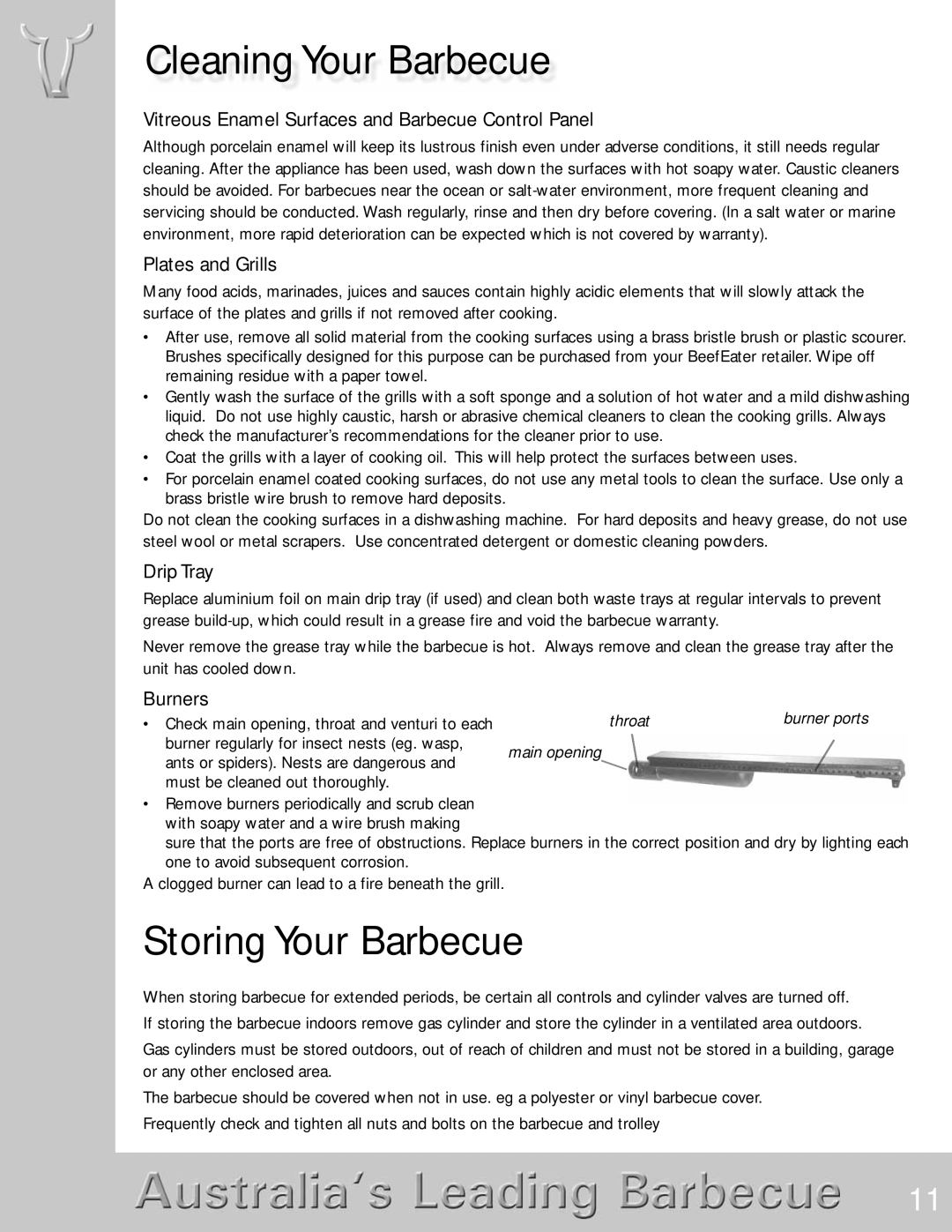Discovery Series specifications
The BeefEater Discovery Series represents a significant leap forward in outdoor cooking technology, designed to make grilling not only easier but also more enjoyable for enthusiasts and casual cooks alike. The series combines innovative design with practicality, catering to diverse grilling needs.One of the standout features of the Discovery Series is its Advanced Cooking System. This groundbreaking technology ensures even heat distribution across the grilling surface, allowing for perfectly cooked food every time. The unique cooking surface is built to retain heat better, helping to achieve those ideal grill marks while locking in the moisture of your meats.
Another key characteristic of the Discovery Series is its robust build quality. Constructed from high-grade stainless steel, the grills are designed to withstand harsh weather conditions, making them a reliable choice for outdoor cooking year-round. The durable materials used in the Discovery Series also resist rust and corrosion, ensuring that your grill will maintain its sleek appearance and functionality over time.
This series also incorporates a range of burner configurations to suit different cooking styles. With options for both gas and charcoal grilling, users can choose their preferred method. The powerful burners provide quick heat-up times, allowing you to start cooking in no time. Additionally, the series features variable flame control, giving you the ability to adjust the heat as needed for delicate dishes or to sear steaks to perfection.
The Discovery Series includes convenient features such as integrated storage spaces and side tables, which provide ample workspace for prep and serving. Some models in the series even have additional features like built-in thermometers and utensil hooks, making your grilling experience smoother and more organized.
Ease of use is another hallmark of the Discovery Series. With push-button ignition systems and easy-to-clean surfaces, these grills are designed for hassle-free operation. The compact design of certain models makes them perfect for smaller outdoor spaces, ensuring that everyone can enjoy the benefits of a high-quality grill.
In summary, the BeefEater Discovery Series combines innovative cooking technology, robust construction, and thoughtful design features to elevate the outdoor grilling experience. Whether you are an experienced grill master or just starting your outdoor cooking journey, the Discovery Series offers a perfect blend of performance and convenience.

